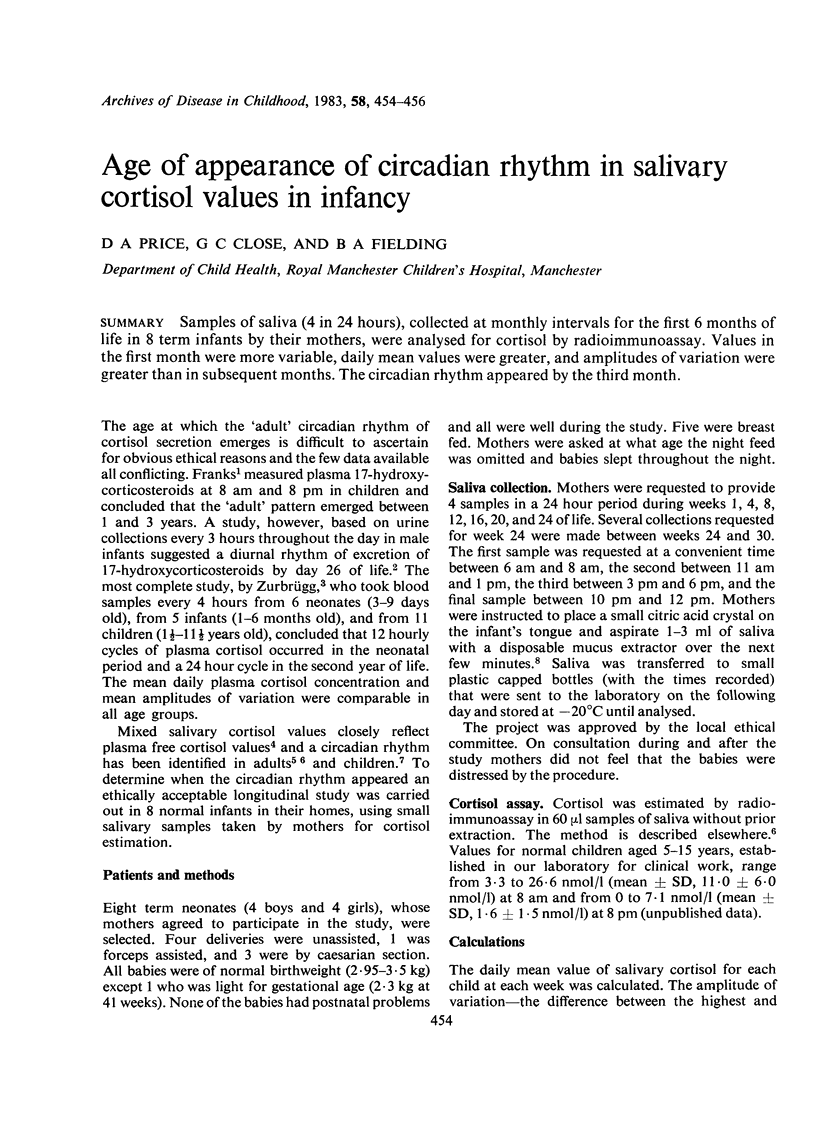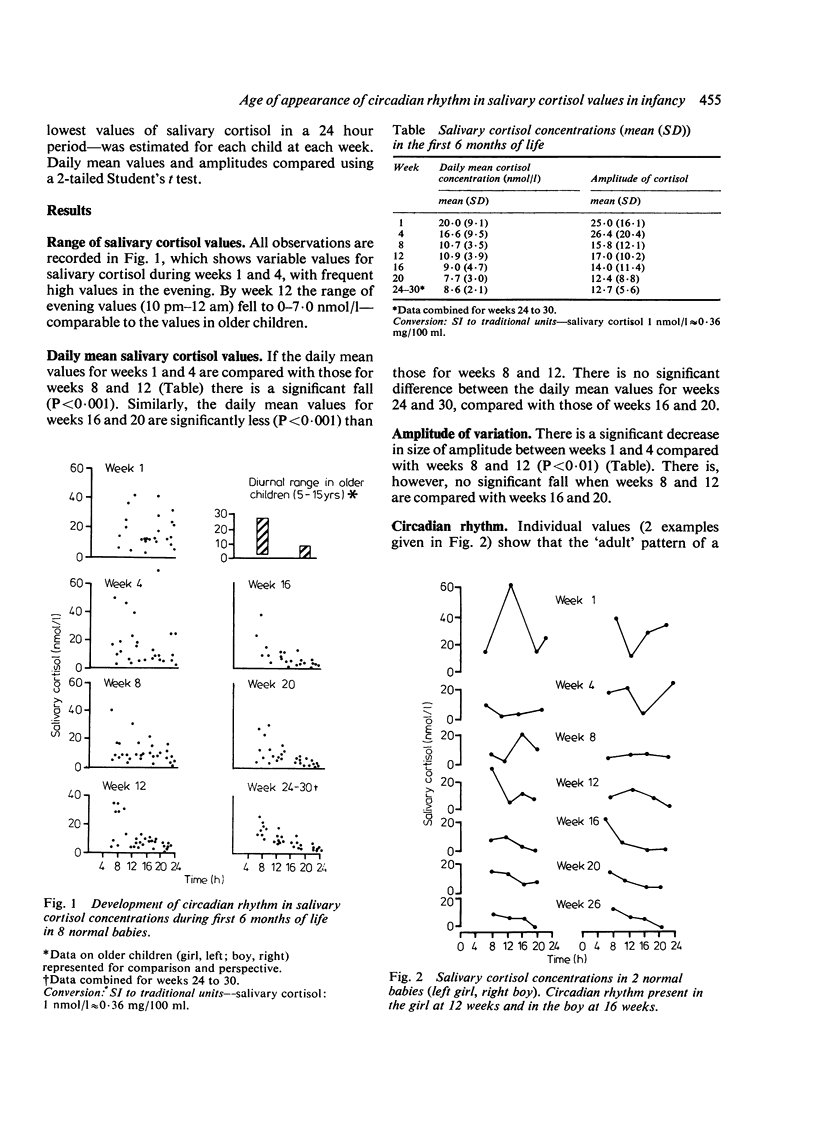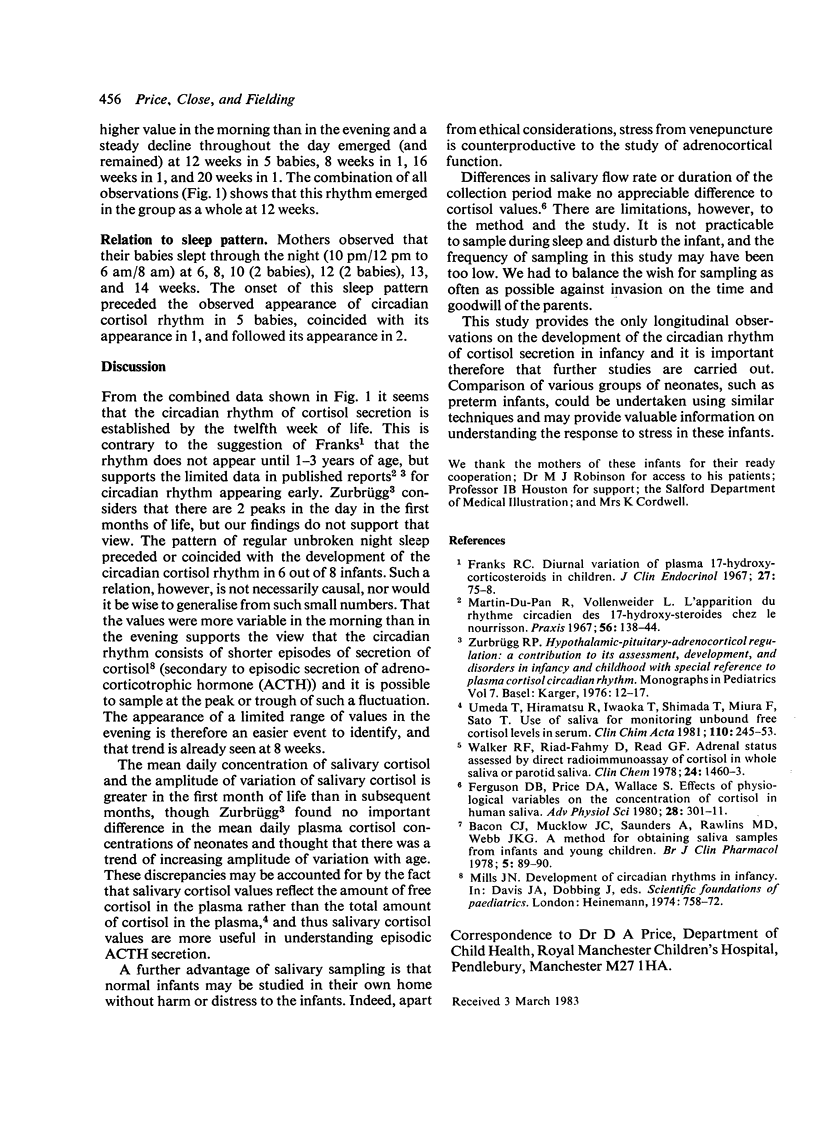Abstract
Samples of saliva (4 in 24 hours), collected at monthly intervals for the first 6 months of life in 8 term infants by their mothers, were analysed for cortisol by radioimmunoassay. Values in the first month were more variable, daily mean values were greater, and amplitudes of variation were greater than in subsequent months. The circadian rhythm appeared by the third month.
Full text
PDF


Selected References
These references are in PubMed. This may not be the complete list of references from this article.
- Bacon C. J., Mucklow J. C., Saunders A., Rawlins M. D., Webb J. K. A method for obtaining saliva samples from infants and young children. Br J Clin Pharmacol. 1978 Jan;5(1):89–90. doi: 10.1111/j.1365-2125.1978.tb01604.x. [DOI] [PMC free article] [PubMed] [Google Scholar]
- Franks R. C. Diurnal variation of plasma 17-hydroxycorticosteroids in children. J Clin Endocrinol Metab. 1967 Jan;27(1):75–78. doi: 10.1210/jcem-27-1-75. [DOI] [PubMed] [Google Scholar]
- Martin-Du-Pan R., Vollenweider L. L'apparition du rythme circadien des 17-hydroxy-stéroïdes chez le nourrisson. Sa modification sous l'effet de la consommation de corticostéroïdes. Praxis. 1967 Jan 26;56(4):138–144. [PubMed] [Google Scholar]
- Umeda T., Hiramatsu R., Iwaoka T., Shimada T., Miura F., Sato T. Use of saliva for monitoring unbound free cortisol levels in serum. Clin Chim Acta. 1981 Mar 5;110(2-3):245–253. doi: 10.1016/0009-8981(81)90353-3. [DOI] [PubMed] [Google Scholar]
- Walker R. F., Riad-Fahmy D., Read G. F. Adrenal status assessed by direct radioimmunoassay of cortisol in whole saliva or parotid saliva. Clin Chem. 1978 Sep;24(9):1460–1463. [PubMed] [Google Scholar]


